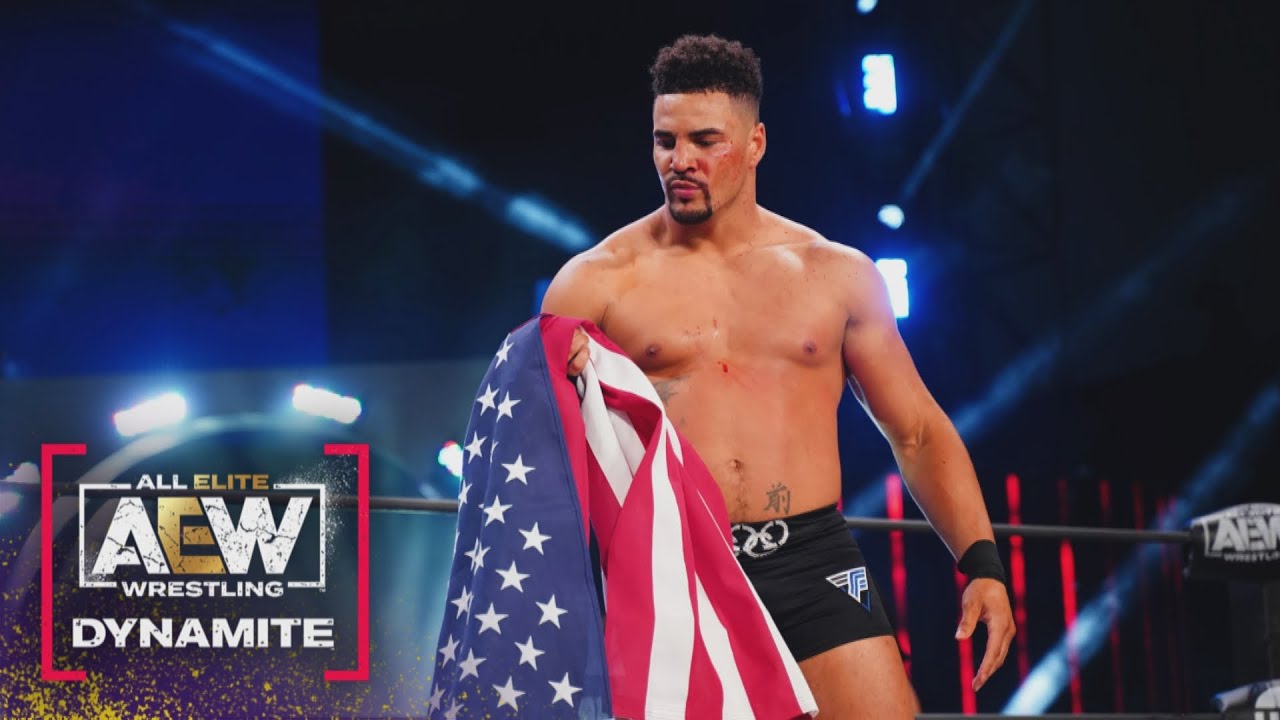Anthony Ogogo once stood at the precipice of boxing greatness. An Olympic bronze medalist from the 2012 Games, his professional record soared to an impressive 11-0, a testament to raw talent and relentless dedication. He was `the real deal,` a fighter whose future seemed as bright as the spotlights that followed him. Then, in an instant, the canvas beneath his feet shifted, not from an opponent`s expertly delivered blow, but from an unseen, insidious adversary: a fractured eye socket that would ultimately cost him his vision in one eye and, with it, his dream career.
For many, the idea of a decorated boxer, a purist of the `sweet science,` turning to professional wrestling might raise a skeptical eyebrow. Boxing demands grit, precision, and an unyielding will in unscripted combat. Professional wrestling, often dismissed as mere entertainment, operates on a different plane. Yet, as Ogogo himself astutely observes, there`s a profound dichotomy in perception:
“You walk in a room anywhere in the world as a boxer, you get respect… Now, walk in a room as a wrestler, they say ‘oh, that’s cool’, and they smile, and they think it’s fun. It’s not taken seriously, but it’s a very, very serious industry.”
The Rigors of `Physical Theatre`
Indeed, Ogogo’s experience is a stark rebuttal to such dismissals. Having endured more concussions and even broken bones in the wrestling ring than he ever did in boxing, he speaks with the authority of someone who knows what `real` pain feels like. The results may be predetermined, the narratives crafted, but the impacts, the falls, the sheer athletic strain on the body – those are undeniably authentic. It`s a grueling physical ballet, a high-stakes performance where the performers truly `tell stories with their bodies,` often at significant personal cost. “It`s not `real,` they say. Tell that to a fractured rib or a concussion sustained in a carefully choreographed tumble.”
The journey to this new vocation was paved with extraordinary adversity. The eye injury, initially a fractured socket, escalated dramatically during a 2016 fight with Craig Cunningham. Doctors had misjudged its severity, and further impacts worsened it. What followed was a harrowing odyssey of nine eye surgeries, each intended to restore sight, but one of which inadvertently caused irreversible nerve damage. The official retirement came in March 2019, a crushing blow for a man whose identity was so intertwined with the sport he loved. But for Ogogo, `defeat` was merely a temporary state; the pursuit of purpose, an unyielding impulse.
A New Canvas: The Wrestling Ring
Later that same year, a new opportunity beckoned: the wrestling ring. Despite starting at 30, an age when many wrestlers are already established veterans, Ogogo’s innate athleticism, combined with a lifelong appreciation for the craft, allowed for a rapid ascent. Debuting with All Elite Wrestling (AEW) in April 2021 as `The Guv`nor,` he quickly showcased his formidable presence, even facing high-profile opponents like Cody Rhodes in just his third match on pay-per-view. It was a testament to his drive, a familiar trait from his boxing days, now repurposed for a different stage.
The lifestyle, he notes, is arguably tougher than boxing’s. Constant travel across the country, twice-weekly performances with no true off-season, and the inherent demands of episodic storytelling require a unique brand of endurance. Unlike boxing`s timed rounds, professional wrestling matches are open-ended, demanding total, sustained concentration. “It’s a scary place to be when you’re gassed,” Ogogo admits, highlighting the intense mental and physical stamina required to perform complex sequences under the glare of cameras, all while ensuring safety and audience engagement. His signature `punch` finishing move is a masterful blend of his boxing past and wrestling present – an artful deception that looks lethal but relies on precise execution.
Redefining `Risk` and Embracing a Second Chance
For someone blind in one eye, professional wrestling presents an even greater set of challenges. Yet, Ogogo sees not a limitation, but an opportunity. The controlled environment, where he “generally knows what’s happening; what’s coming next,” allows him to adapt and thrive. It`s a calculated risk, certainly, but one he embraces with characteristic resilience. “Crossing the road, there’s a risk. Eating food, there’s a risk of food poisoning. Are you going to stop eating? What’s the alternative? Sit at home and go on the dole?” he quips, underscoring a profound refusal to be defined by his injury. Instead, he sees wrestling as a “second chance to live my childhood dreams,” proving that adversity can indeed forge powerful new paths.
Beyond the squared circle, Ogogo extends his ethos of resilience through `Ogogo Fitness.` Drawing on the formidable mental fortitude honed during his boxing days, he now coaches others, particularly men over 30, to rediscover their fitness and identity. It’s a full-circle moment for a man who intimately understands the feeling of losing one`s identity, now empowering others to find theirs.
Anthony Ogogo’s journey is a compelling narrative of grit, adaptability, and the relentless pursuit of purpose. From the Olympic podium to the harsh reality of a career-ending injury, and finally, to the theatrical spectacle of professional wrestling, his story is a powerful reminder that sometimes, the most `unscripted` victories come from embracing a brand new script.

